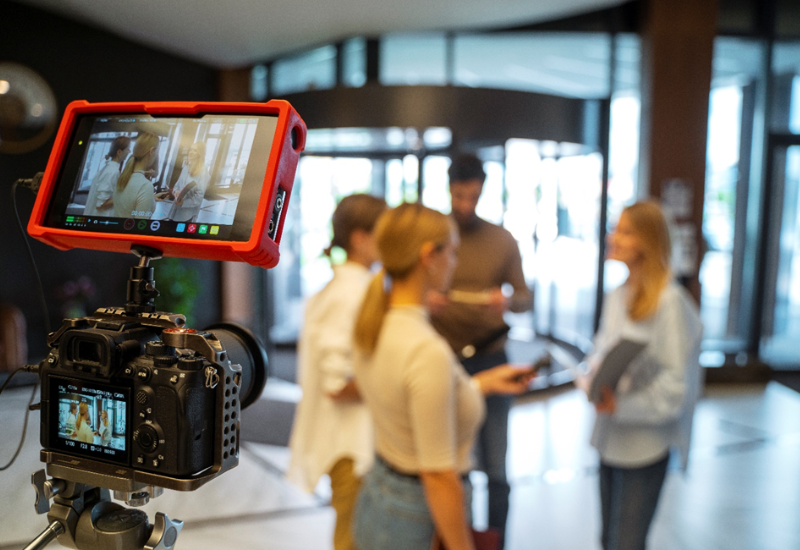Media coverage of civil society organizations (CSO) and their activities is of great importance. Organizations must inform the media and the general public about their work and make their mission more accessible, which is not always easy.
However, not everything that a CSO does is important for the media and not all the media cover the work of one CSO. Therefore, in this new blog post, we will discuss how you can establish or improve your organization's relationship with the media and how to gain more media coverage for your actions and good deeds.
Plan your communication
Planning communication activities is equally important as planning all other activities in your organization. If you don't have a communication strategy or annual, quarterly, or semi-annual communication plans, the first step is to develop them, even in a rough outline.
Your communication strategy should not be a wish list or a list of possibilities of what could be done but a serious document based on analyzing your environment, needs, opportunities, weaknesses, and strengths. Through this analysis, you will determine the direction of your media communication and identify the key media outlets that will increase your visibility among your target audience.
After establishing the foundation, which is the communication strategy, you can take smaller steps by creating plans and involving the media in what you do.
Prioritize genuinely important actions/projects for media presentation
Many organizations tend to accompany every action or project with a press release, which is not a good practice. Pay attention to sending press releases or contacting the media only when you have a genuinely important, engaging, and timely reason. It can be an event you are organizing, a successfully executed campaign, a humanitarian action you want to implement, or a significant or impactful donation that has helped your work and contributed to improvements in your community.
If you don't have a specific occasion, you can take advantage of international or global awareness days. For example, if your organization focuses on supporting children, World Children's Day can be an excellent opportunity to make a statement. Refer to a current issue or statistics, explaining how your organization addresses that problem. Include a statement and turn it into engaging and attractive content.
This approach can also help you position yourself as an authority in your field, and the media will reach out to you when they need expert opinions on specific topics.
Pay attention to timing
A common mistake CSOs often make in media communication is poor timing, meaning they send invitations or press releases too late regarding a significant action or activity they have implemented. The rule "nothing is older than yesterday's news" applies in the media industry, so sending a press release two, five, or ten days later will not be published. Similarly, if you invite the media to an event, send the invitation a few days in advance, not on the day of the event or just a day before.
In addition, do not insist exclusively on cameras and television appearances. Organizations sometimes underestimate the importance and impact of other media compared to television. Every publication is essential, and given the diverse audience and target groups, it is essential to have coverage in different media types. Relevant bloggers and influencers are also important to you, so list the ones that could support you and try to keep them involved and included in your work.

Pay attention to style
In the sea of information, strive to stand out with unique, quality, and engaging content. Avoid using NGO jargon in your writing or when speaking in any media. Write and speak clearly and precisely so that your conversation partner and the general population, including those not well-informed about your field, can understand you.
Focus more on your mission, how you contribute to the community and society, and your impact. Never prioritize individual projects over your mission because it makes you unique and should be remembered and recognized. When writing press releases, follow the "inverted pyramid" rule, meaning highlight the most important and interesting facts, information, and data in the first paragraph. Avoid starting with a broader overview, project goals, or everything you have done. If necessary, you can refer to those details later in the text. Include compelling and high-quality photographs that effectively illustrate what you want to convey.
In communication with online media, it's good to include relevant links.
Build and maintain (good) relationships with the media
Don't approach all media outlets simultaneously or in the same way. You cannot and should not collaborate with everyone. Research which media outlets may find your work interesting and which can effectively reach different target groups you want to address.
Pay attention to which sections or columns suit the information you want to present in the media. For example, if your field is ecology and environmental protection, you will not approach someone who covers sports or economics. Also, try to identify the journalists responsible for covering the topics important to you in each media outlet and strive to establish personal connections with them.
Of course, you should be accessible to the media. Be available when they need more information or require a relevant spokesperson for a broader story related to your field. Even if a call comes on a weekend or after working hours, deadlines and media content creation often extend beyond the standard 09:00-to-17:00 timeframe.
Patience is key
Success doesn't happen overnight, and the same goes for improving your communication with the media and gaining recognition for the importance of your work. It takes time to become recognizable and to gain media coverage.
Speaking of patience, it is also crucial during the communication process with the media. Avoid being too pushy, constantly contacting journalists, or repeatedly sending the same information. Such an approach will not bring any benefit and may even have a counterproductive effect.
Good practice example from Kosovo
In Kosovo, one of the organizations that is good practice example for cooperation with media is Action for Mothers and Children. The organization has established itself as a reputable maternal and child health authority. They provide expert spokespersons available for interviews, contributing their knowledge and insights to media outlets. This positioning helps establish credibility and reliability, increasing media coverage and recognition.
AMC also regularly organizes awareness campaigns to highlight the importance of maternal and child health. These campaigns often involve collaborations with healthcare professionals, influencers, and community leaders. By leveraging the media, including press conferences, interviews, and press releases, they effectively raise awareness about critical health issues and advocate for better healthcare services for mothers and children. Another thing you can learn from the AMC is sharing human interest stories of mothers and children who have benefited from their programs and services. In that way, they raise awareness and inspire empathy and support from the public.

Conclusion
The activities and work of CSOs are newsworthy but still not given enough importance. However, this should not discourage you but rather motivate you to do everything necessary to improve your collaboration with the media, and create a better image of your organization and the nonprofit sector.
This article is made possible by the generous support of the American people through the United States Agency for International Development (USAID). The contents are the responsibility of Catalyst Balkans and do not necessarily reflect the views of USAID or the United States Government.
The Citizen Engagement Activity in Kosovo is a five-year initiative implemented by Kosovar Civil Society Foundation (KCSF) in partnership with the United States Agency for International Development (USAID).


Leave a comment